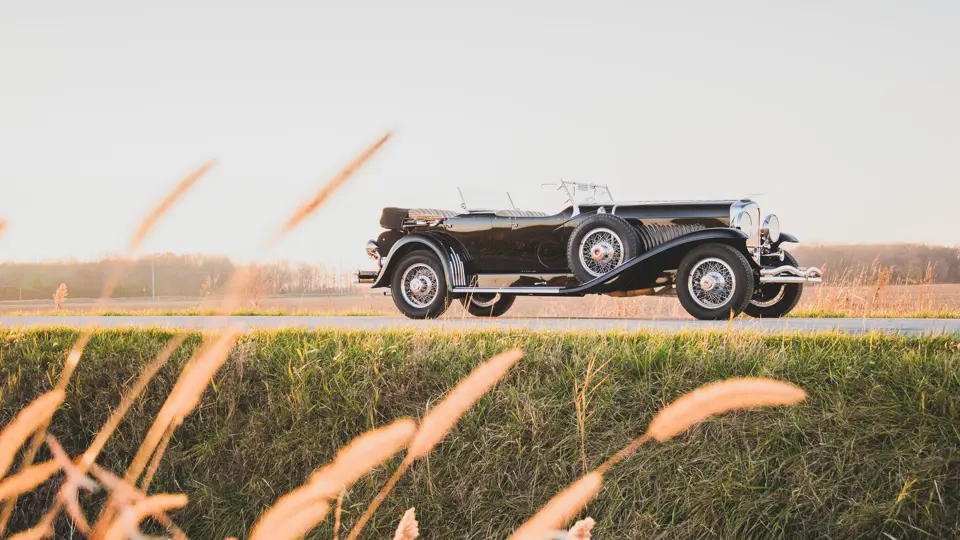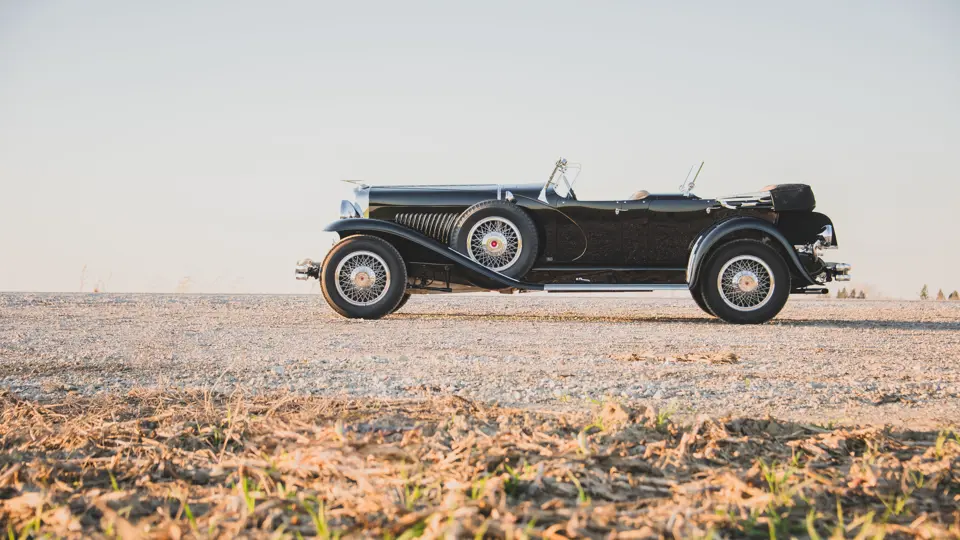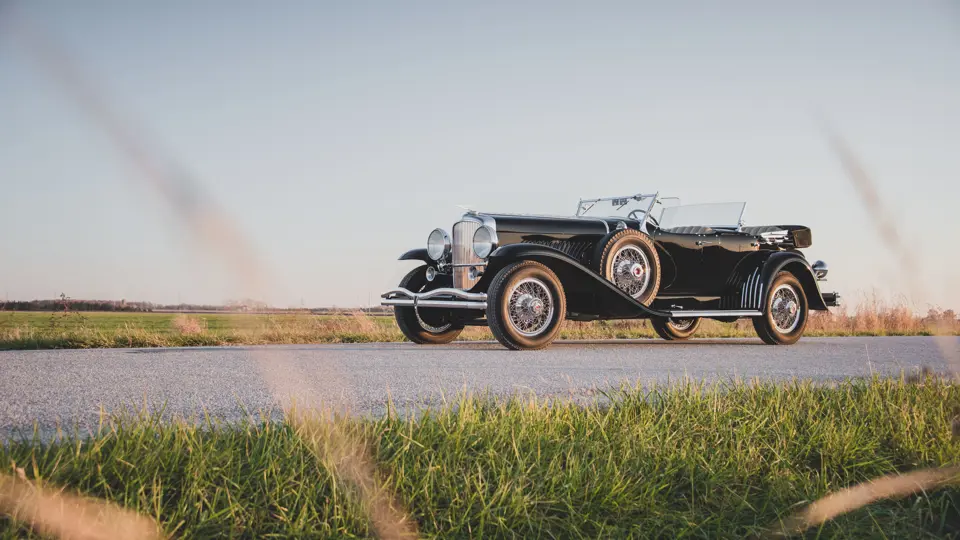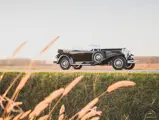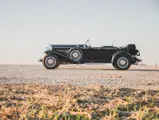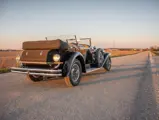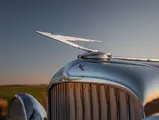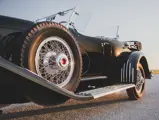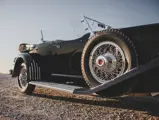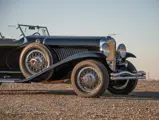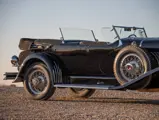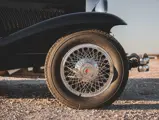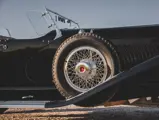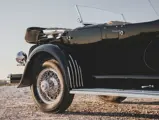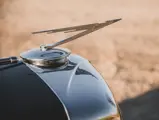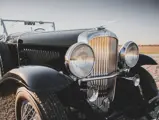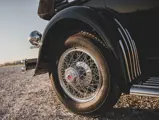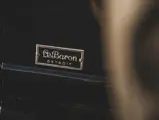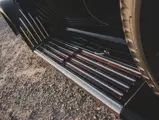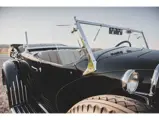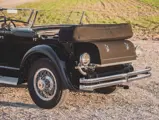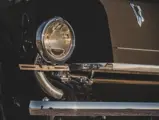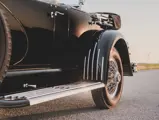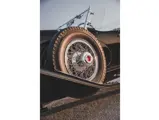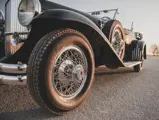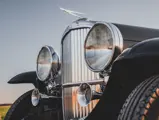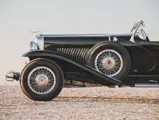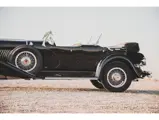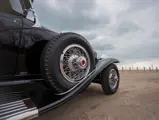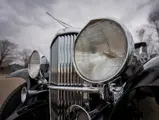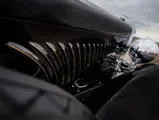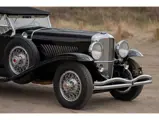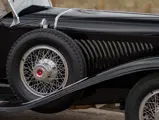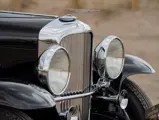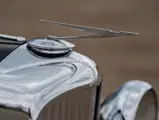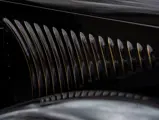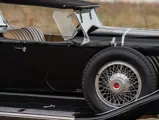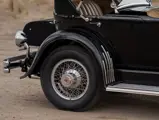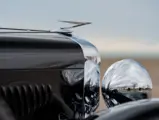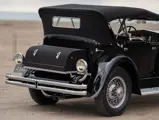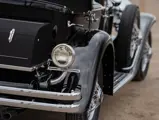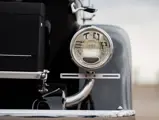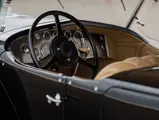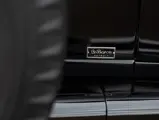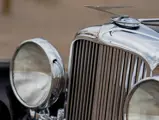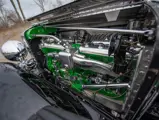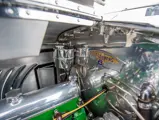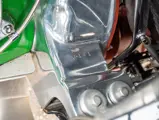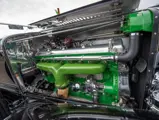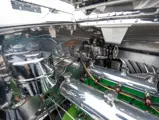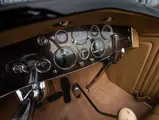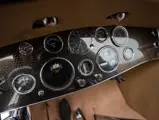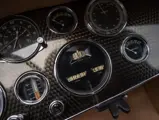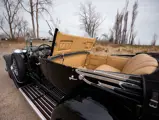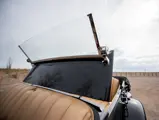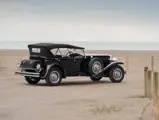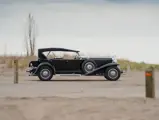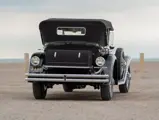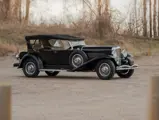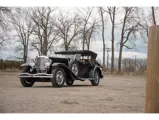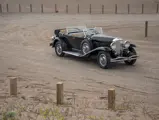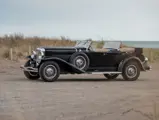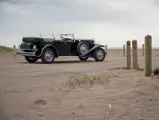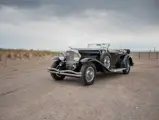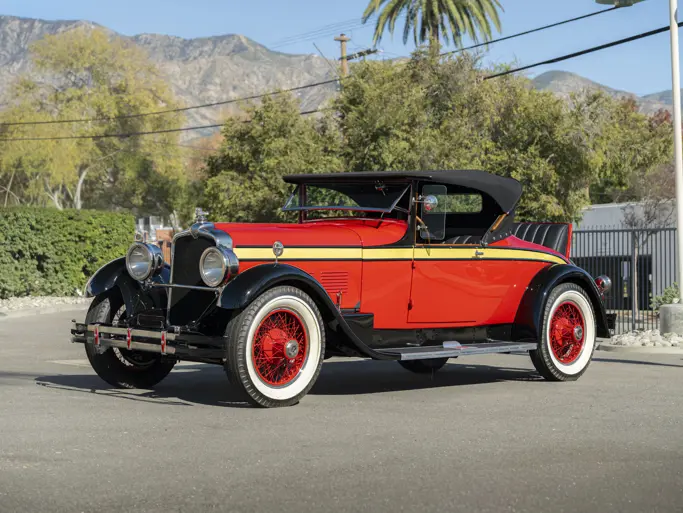
1929 Duesenberg Model J 'Sweep Panel' Dual-Cowl Phaeton by LeBaron
{{lr.item.text}}
$2,650,000 - $2,850,000 USD | Not Sold
{{bidding.lot.reserveStatusFormatted}}
- An exceptional example of the renowned Model J
- Originally delivered to chewing gum scion and Duesenberg aficionado, Philip K. Wrigley
- Retains original chassis, engine, and firewall, as well as coachwork installed for Mr. Wrigley
- Restored by Duesenberg specialist Brian Joseph’s Classic & Exotic Service
- Well-known ownership history; enjoyed by prominent Duesenberg enthusiasts for decades
- Multiple award-winner in national concours and club competition
- Auburn Cord Duesenberg (ACD) Club Certified Category 1 (D-199)
The famous ads spoke to “He Drives a Duesenberg,” selling their buyers not only an automobile but a vision of the immense wealth and power in which it could only be enjoyed. Such wealth and power belonged to the heirs of William Wrigley, Jr., who had established his namesake concern in 1891, selling first soap, then baking powder, with which he offered packages of chewing gum as a premium. He quickly found that the gum was more popular than the baking powder, and changed his business accordingly. The rest is history.
Wrigley’s son, Philip K. Wrigley, worked closely with his father, and eventually succeeded him both as CEO of the Wrigley Company and as head of the Chicago Cubs in 1932; he would see both grow during his tenure. The younger Wrigley was an avid, studied automobile enthusiast, likely spurred both by his youthful access to the world’s finest cars, and to another of the family’s business interests: they were major shareholders in the Auburn Automobile Company, manufacturers of the Duesenberg. Duesenberg historian Randy Ema notes that the family’s close relationship allowed them to purchase several Model Js, all at cost and directly from the factory!
Philip K. Wrigley took a close interest in the Model J and actually traveled to the Duesenberg factory to oversee and even participate in the completion of his own chassis, number 2177 with engine J-121, mounted with a Convertible Coupe body by Murphy. Mr. Wrigley returned with the car to Chicago and drove it for just over a year and about 10,400 miles before determining that he preferred the “Sweep Panel” Dual-Cowl Phaeton owned by H. Leslie Atlass, a CBS executive and friend of the family. As Mr. Wrigley wanted to keep the chassis that he had helped to build, bodywork was swapped rather than simply trading cars.
The Duesenberg, now exactly as its original owner desired it, moved with him to the family’s property at Pasadena, California, and was traded back to Duesenberg in 1936. It resurfaced in Southern California following World War II, and after two brief ownerships in 1945 was purchased by early Orange County Duesenberg enthusiast, Thomas Corn. Mr. Corn arranged a payment plan to complete his purchase, with the final installment entailing completing engine work on a Mercedes-Benz for J-121’s seller. Unfortunately, the Mercedes-Benz engine threw a rod, and subsequently landed J-121 in a storage yard while Corn completed his military service.
In 1948, J-121 was sold out of the yard to Clinton A. Reynolds of Anaheim, another noted early enthusiast of pre-war automobiles, and remained in his ownership until his passing in December 1962. The Duesenberg was inherited by his son-in-law, Robert E. Garrison, and remained with the Garrisons for nearly two decades before it was finally sold to Phil Renick, a well-known local Cadillac dealer and prolific collector of Duesenbergs. Upon his purchase, Renick had his restorer, Tony Antone, fully restore the car in two-tone green with a brown leather interior. After its completion, the car was pictured in an article on Renick’s Duesenbergs in the June 1973 issue of Car Classics magazine.
That same year, J-121 was sold by Renick to Burt Sugarman of Beverly Hills, a television producer best known for his work on The Midnight Special. Sugarman kept the car for eight years before it was acquired by Harry Rinker, a noted collector from San Clemente, California.
In 1992, J-121 would leave Southern California for the first time since its original ownership. It joined the esteemed collection of Terence E. Adderley—a very well-known collector of American classics, with a focus on Gordon Buehrig-designed Auburns, Cords, and Duesenbergs—often considered one of the finest assemblages of these cars. Opting to keep J-121 in its Rinker-commissioned restoration for the first decade of his ownership, Adderley later commissioned renowned Duesenberg specialist Brian Joseph of Classic & Exotic Service in Troy, Michigan, to fully restore the car.
The restoration was completed in 2004 and was shown at the Pebble Beach Concours d’Elegance that year, placing third in the Duesenberg class behind two highly significant disappearing-top convertible coupes. J-121’s next major showing was at the ACD Club National Reunion in 2010, where it received the Fred and August Duesenberg Trophy for Best Duesenberg, as well as the Harold Ames Trophy for Best of Show. It is worth considering that this reunion saw the largest-ever gathering of Duesenbergs in one place, having 40 cars take part in the show on Saturday and approximately 35 other Duesenbergs present in Auburn that weekend, for a total of 75 cars!
Following Adderley’s passing in 2018, the car was sold from his collection in 2021 to another collection of significant American pre-war cars that is no stranger to Duesenbergs. Upon arrival at its new home, the car received a minor cosmetic and mechanical refreshening, as Brian Joseph’s restoration had been remarkably well preserved. The car returned to the Pebble Beach Concours d’Elegance in 2022, again placing Third in Class.
Retaining its original chassis frame, firewall, and engine (including both numbered bell-housing J-121 and matching original crankshaft 121), as well as the LeBaron bodywork swapped at the request of its very special first owner, J-121 is a spectacular car that remains exactly as Philip K. Wrigley, Duesenberg connoisseur, envisioned it.




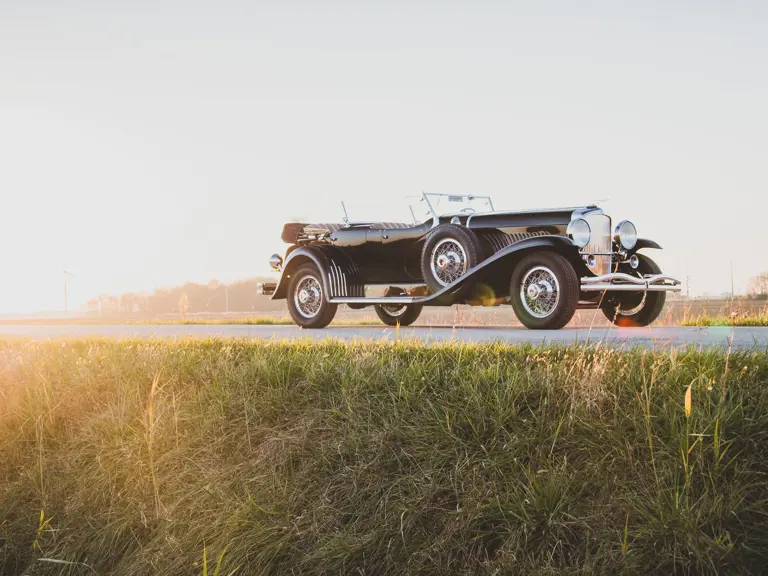
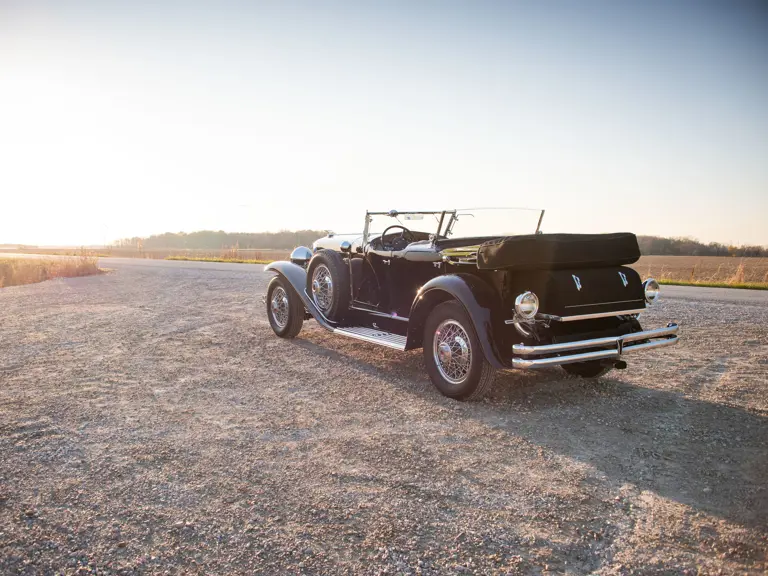
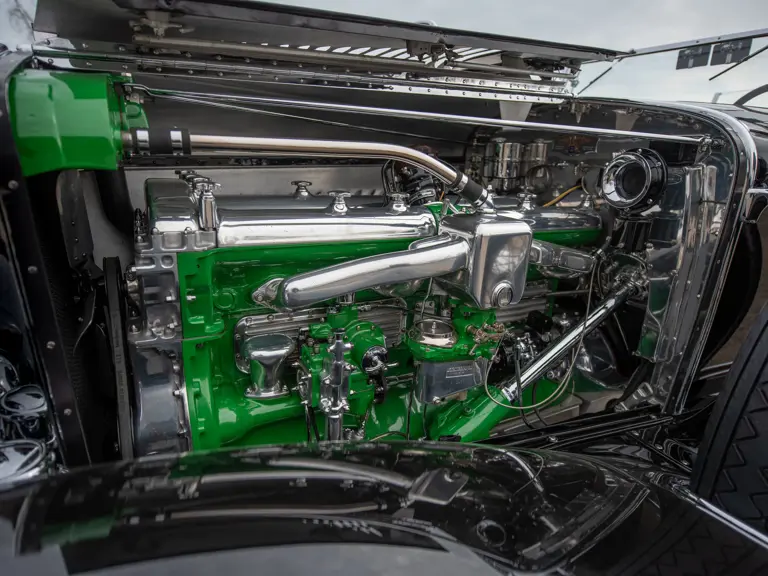


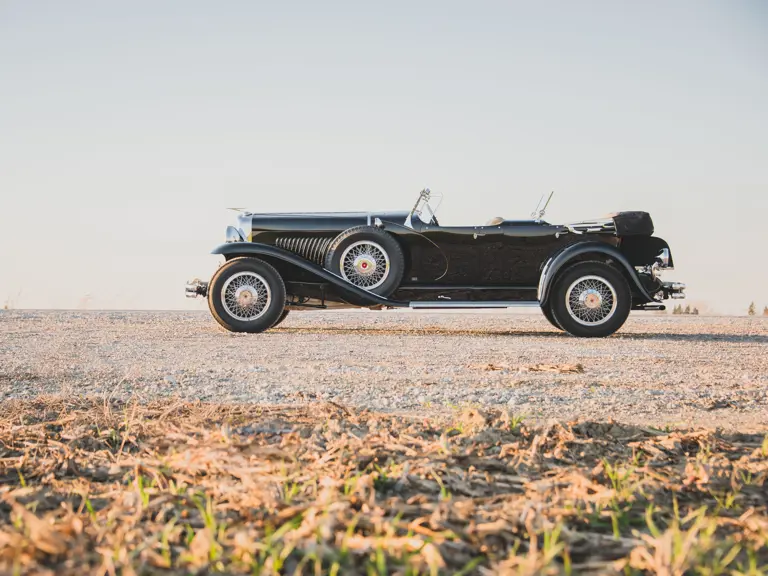
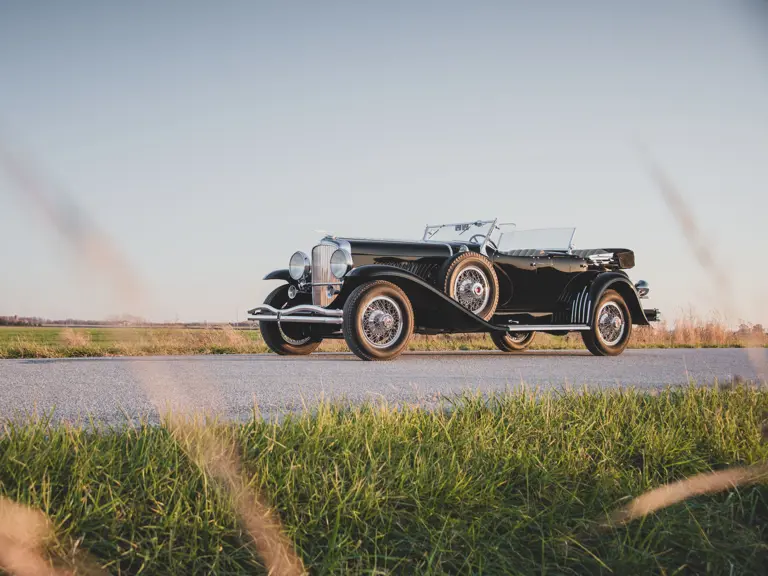

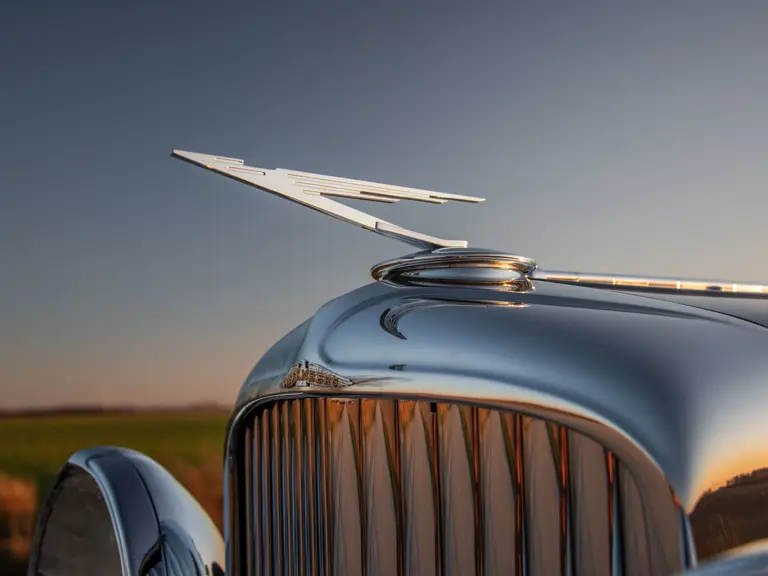



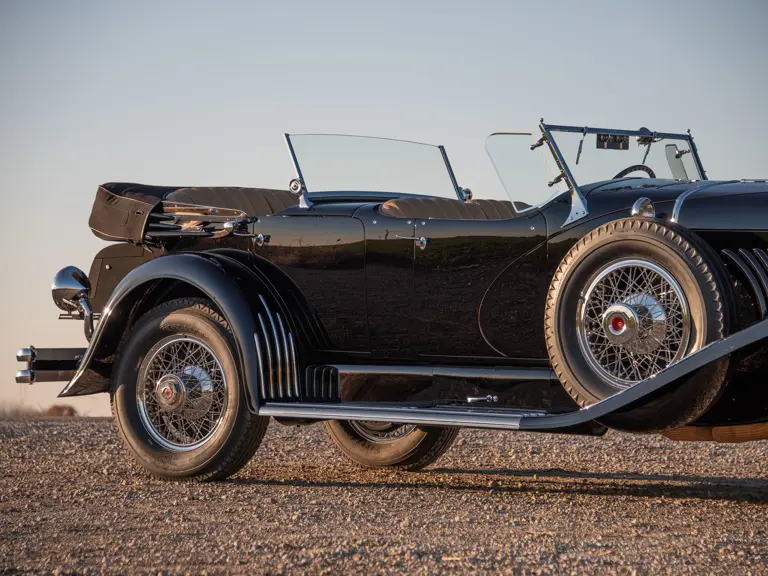
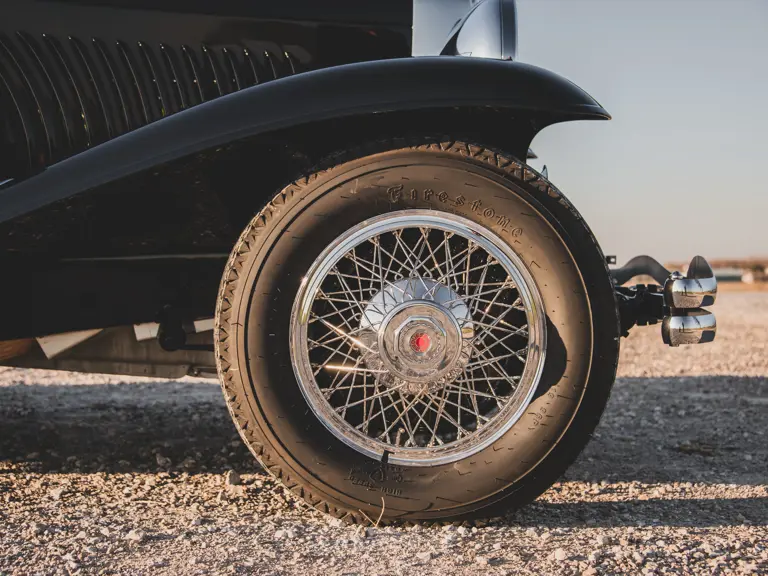
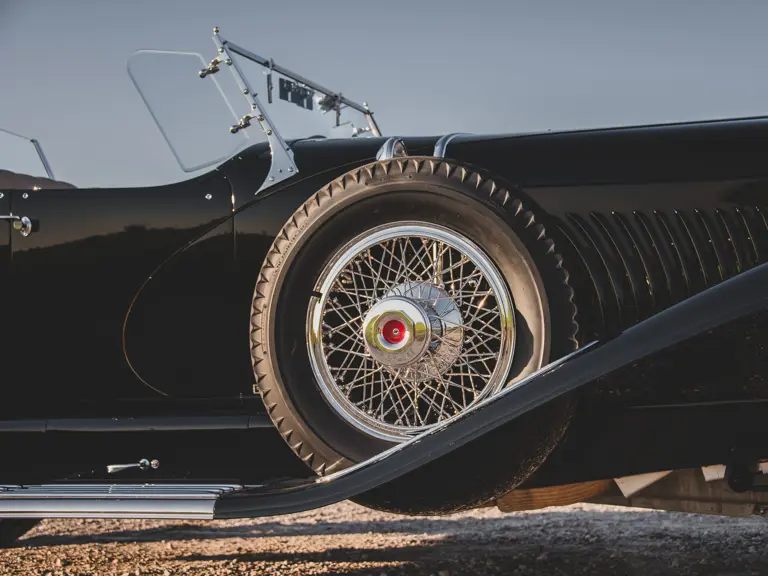
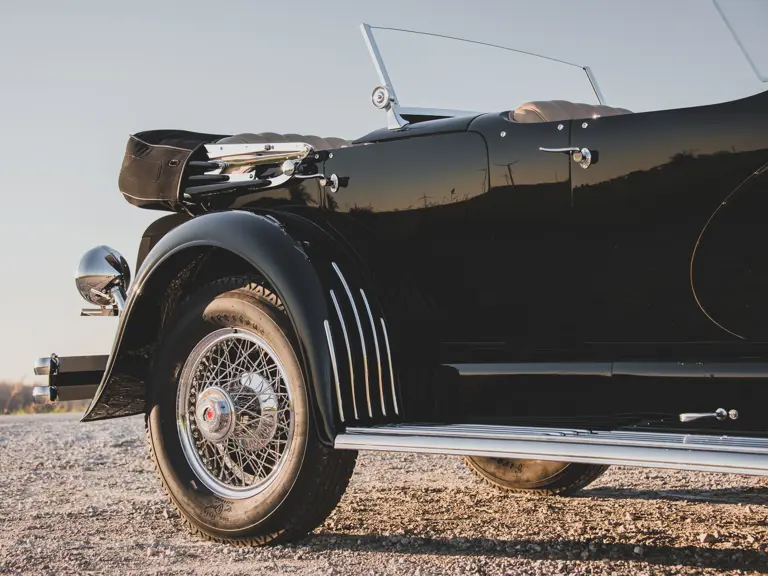
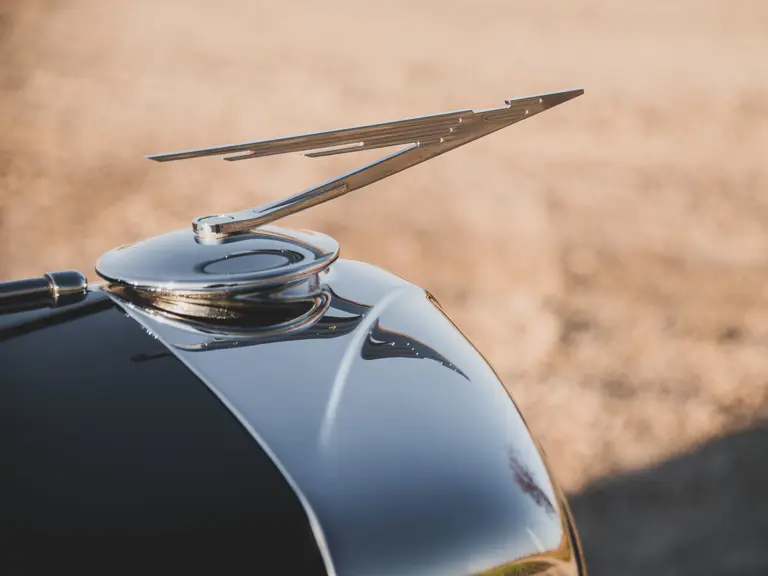
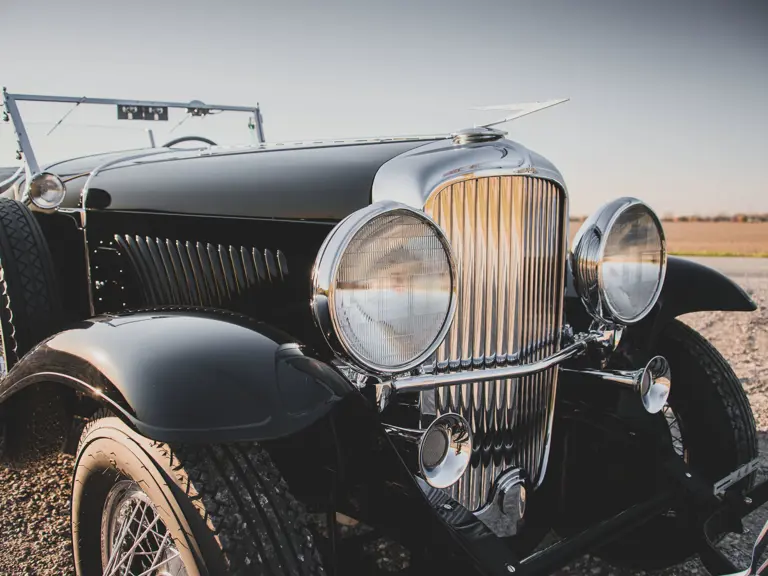

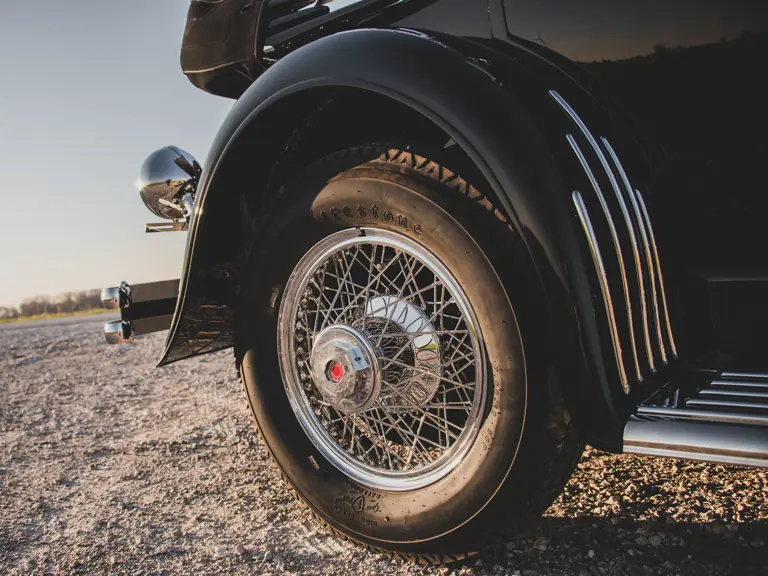
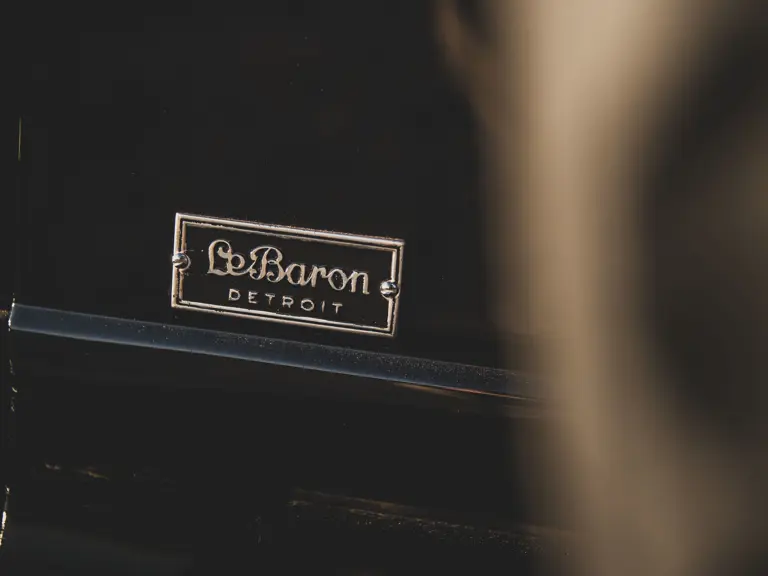
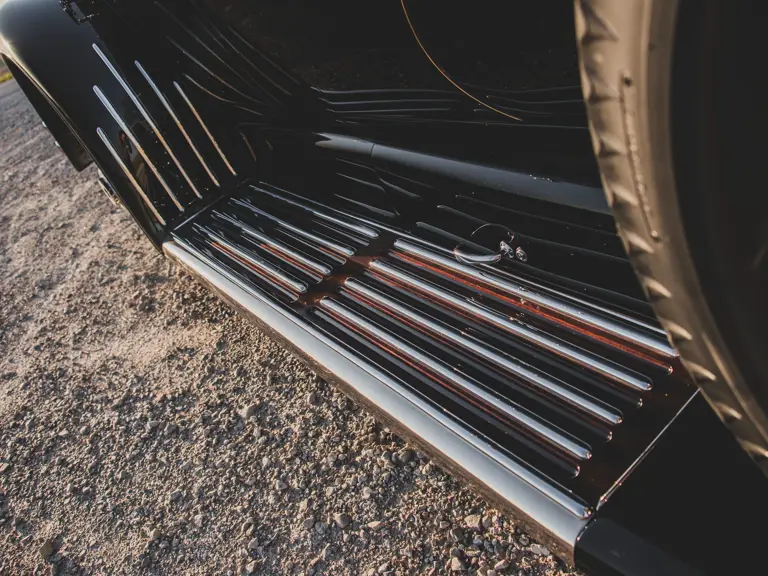
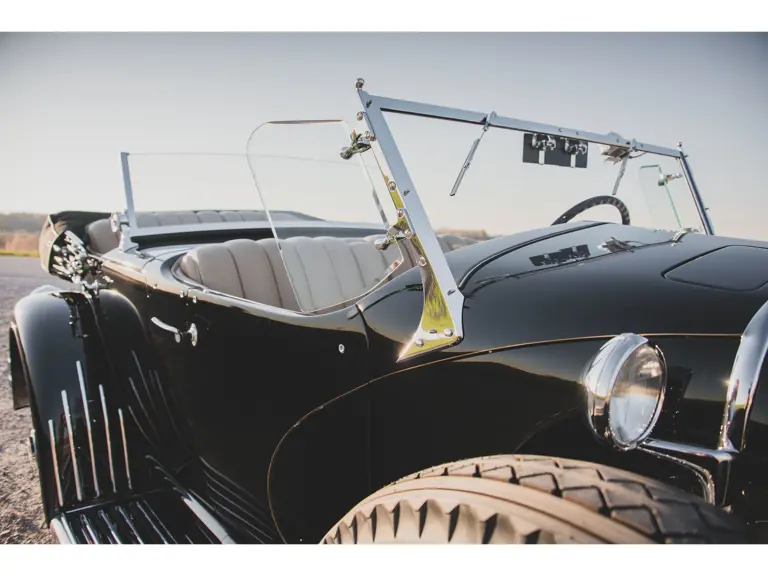
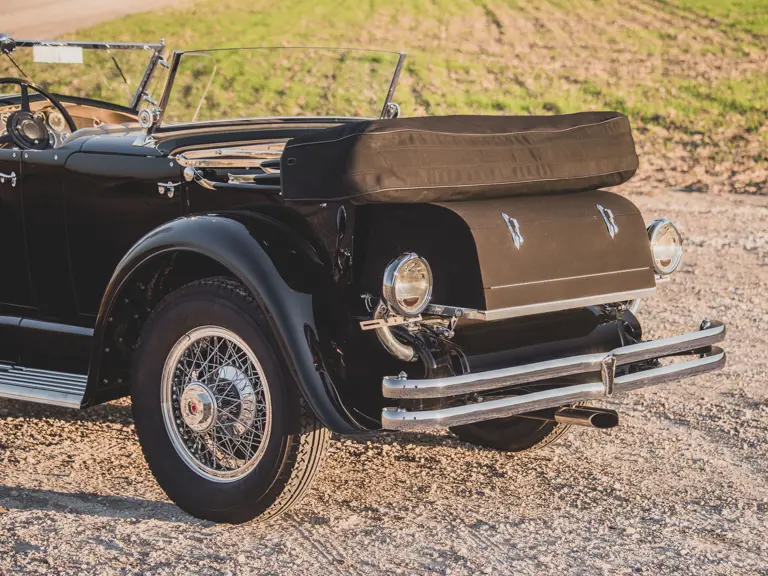

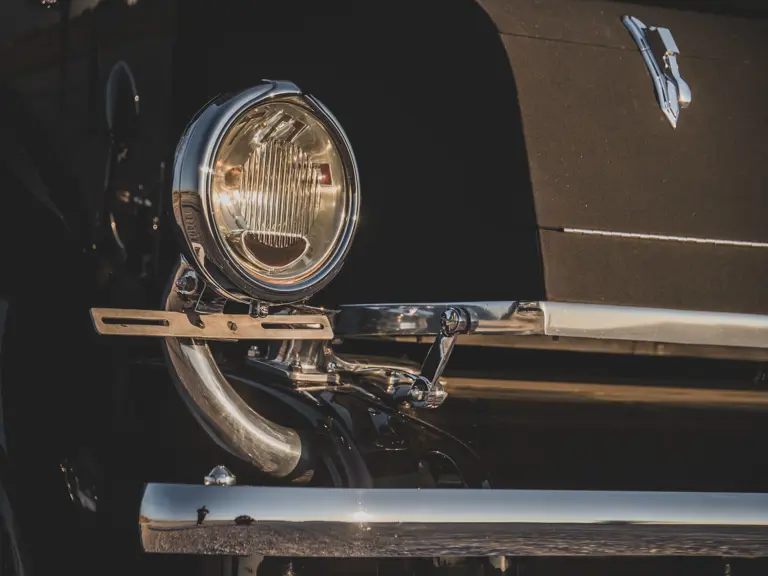



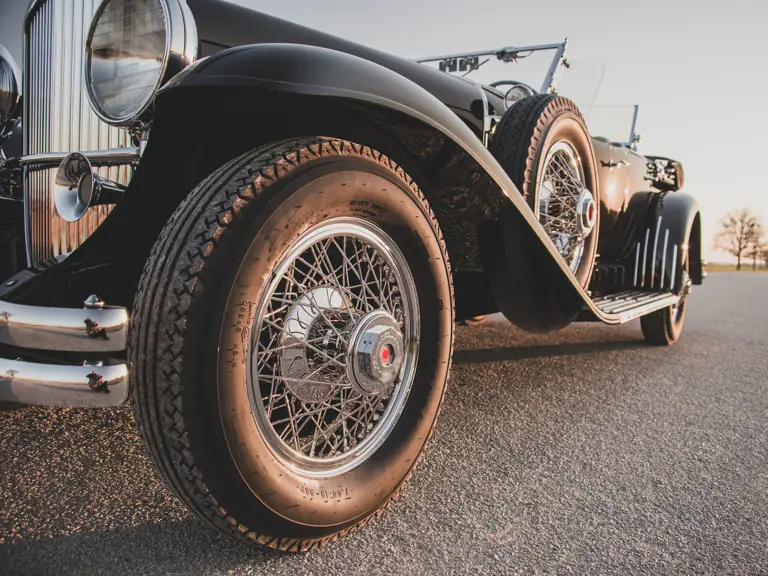
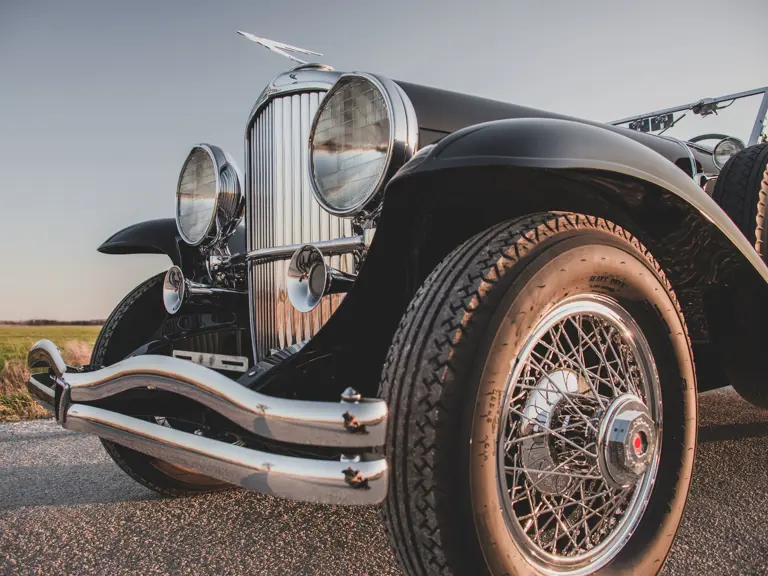
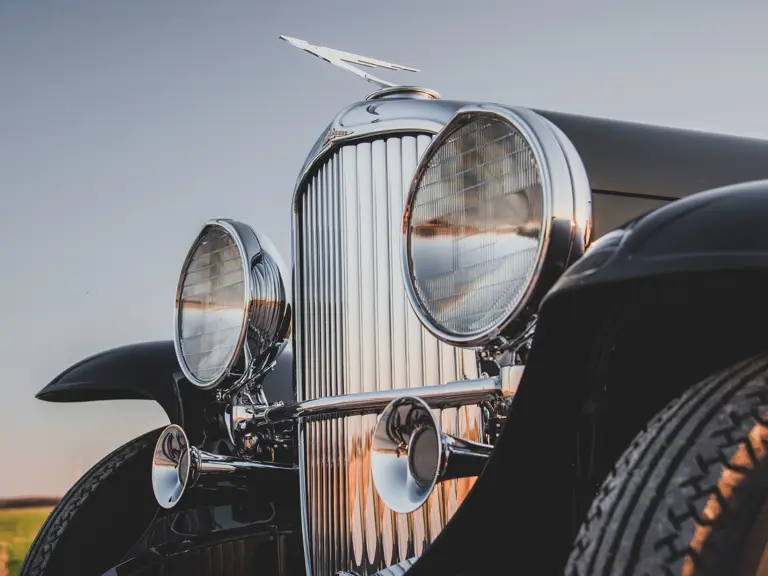
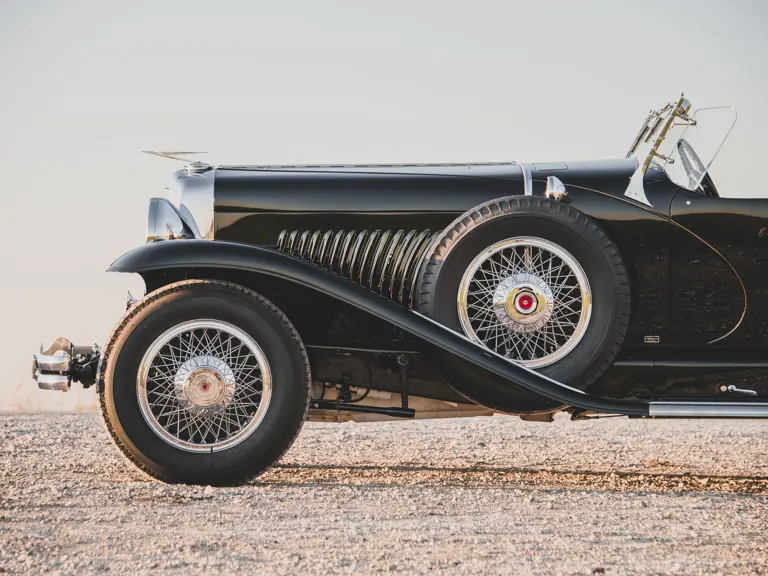
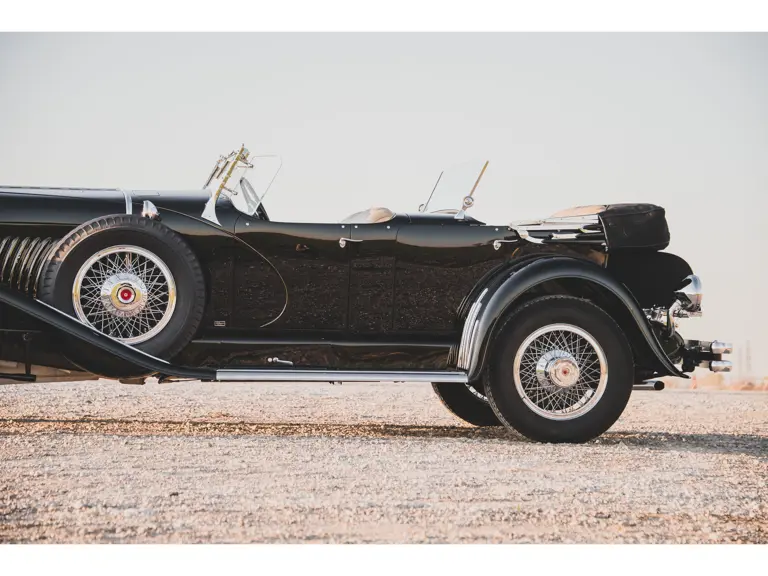


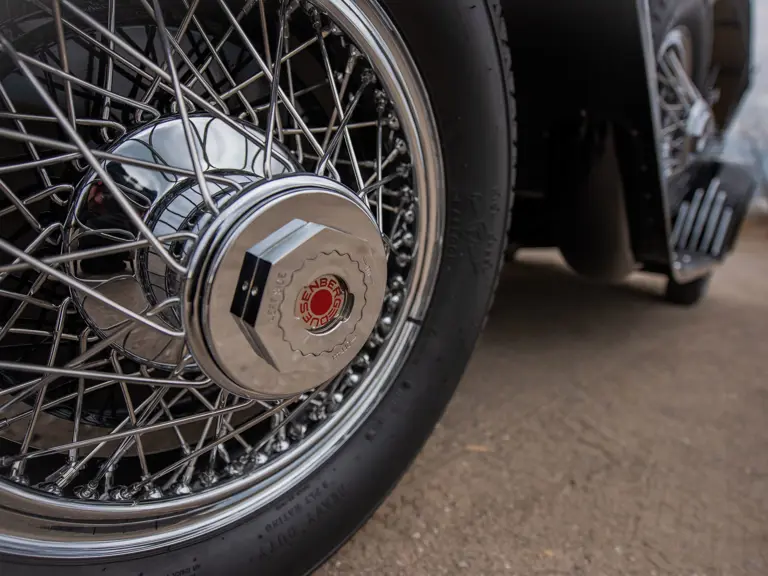
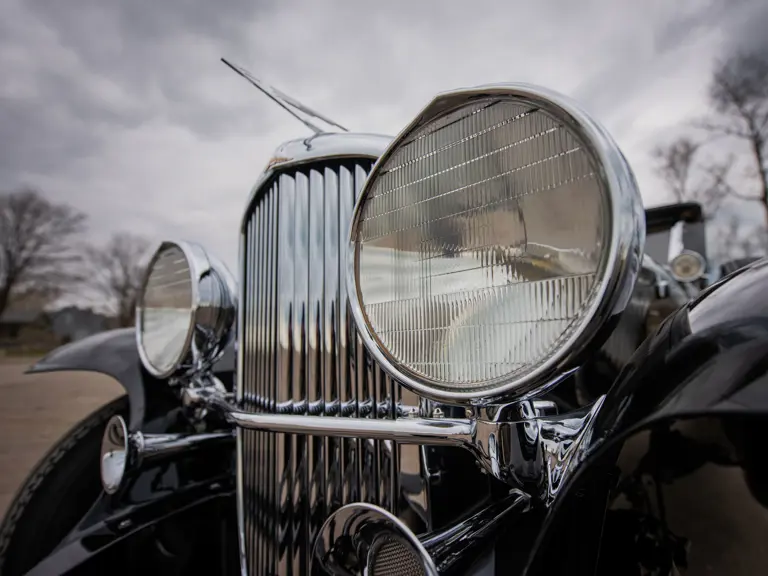

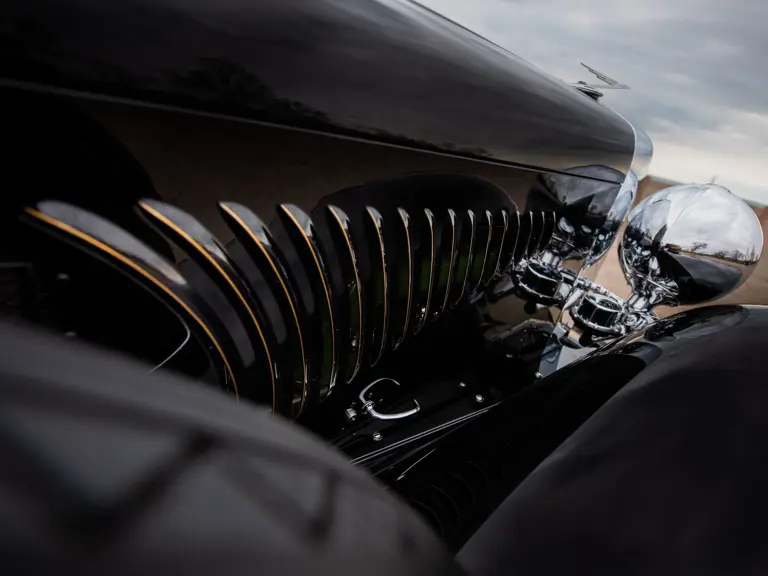
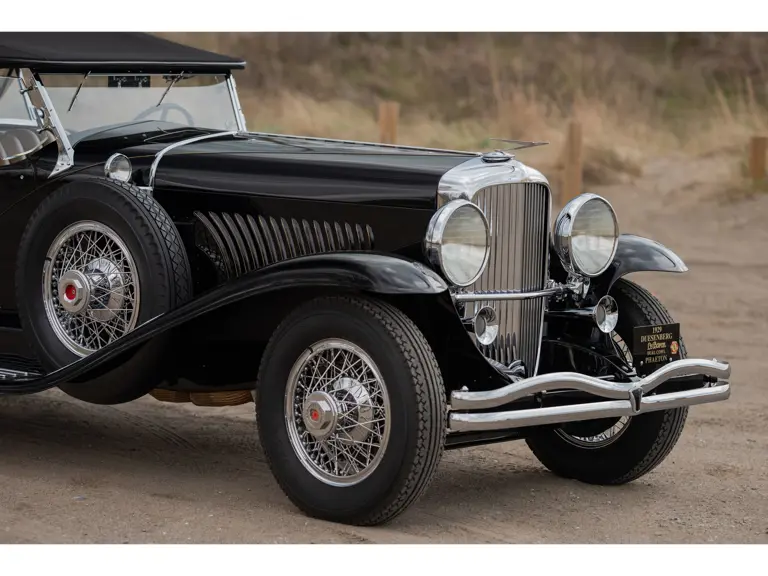
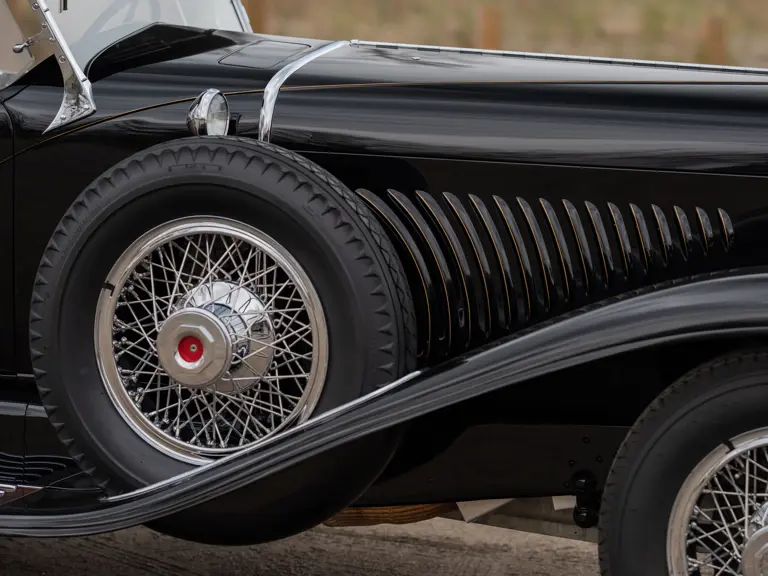


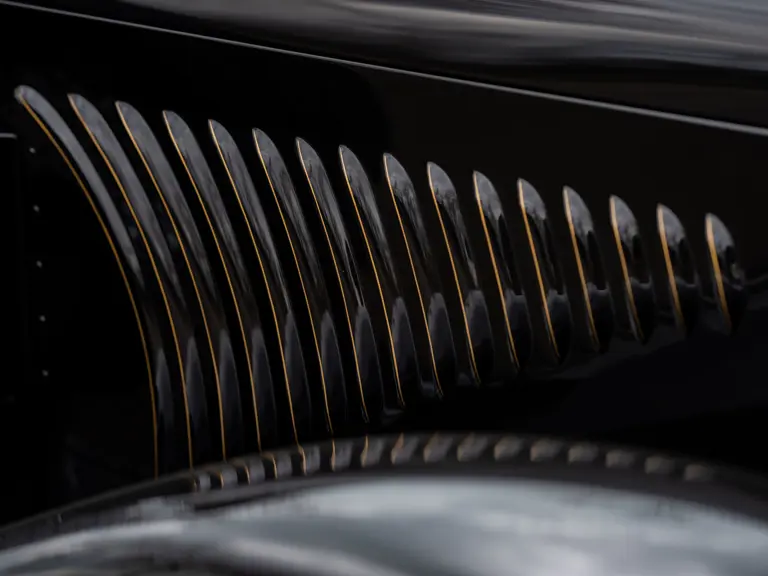

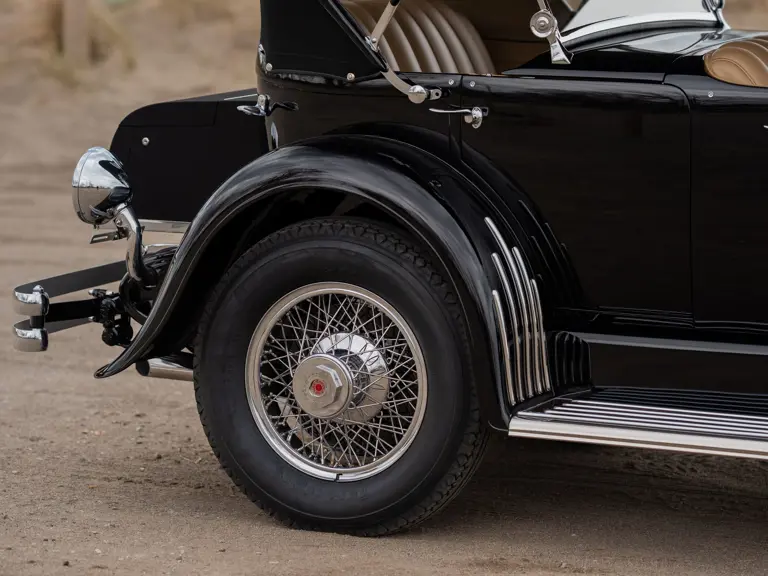

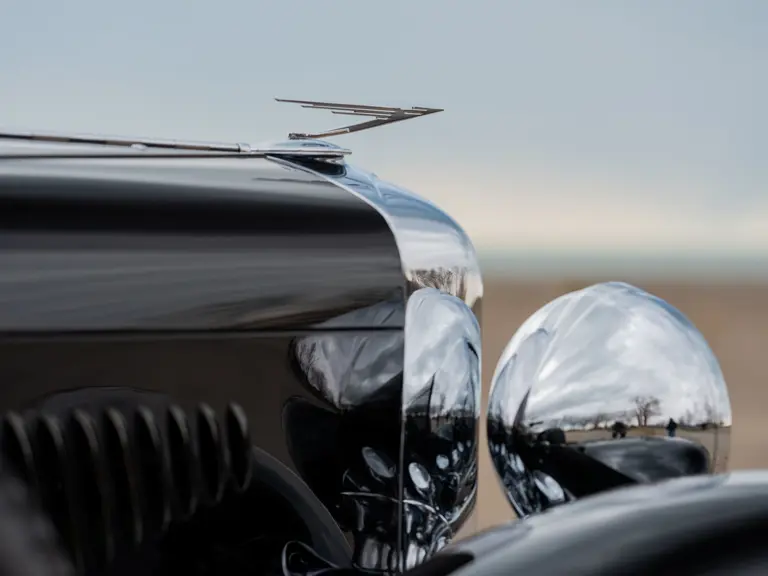
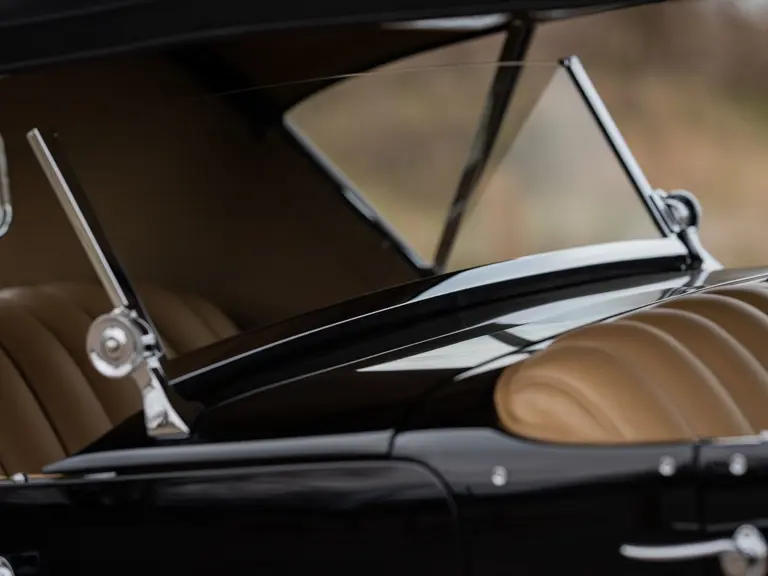
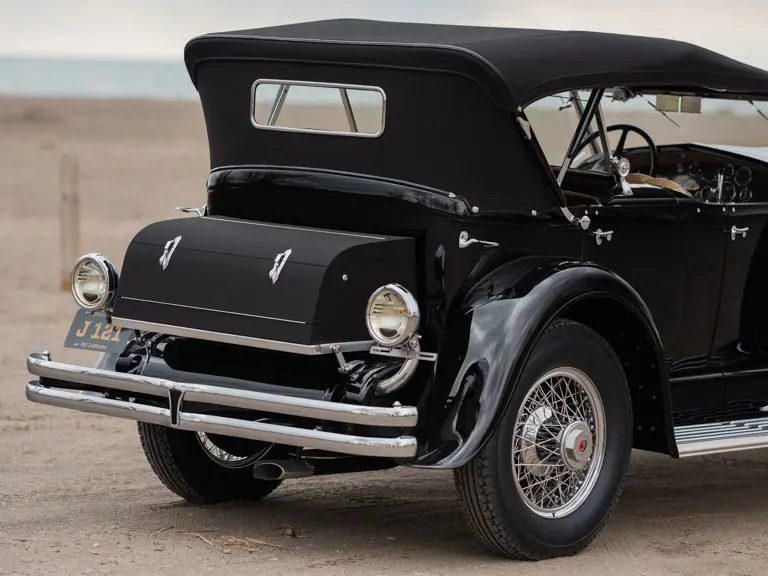
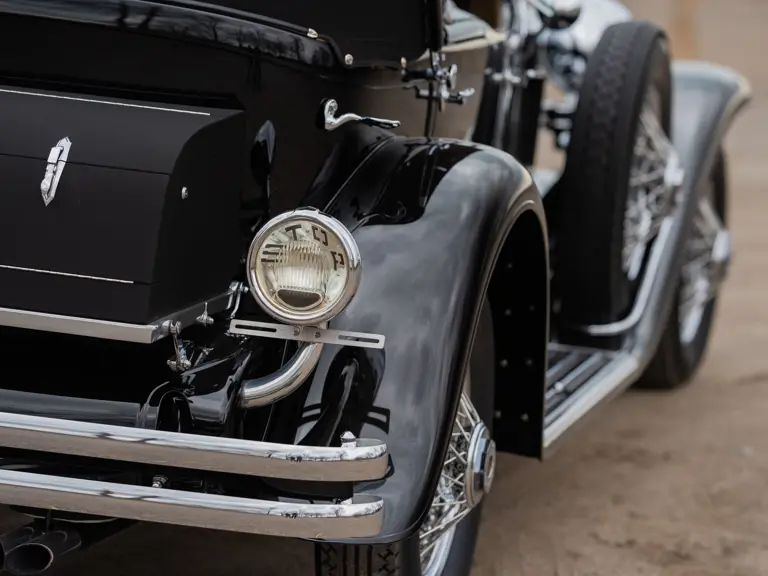
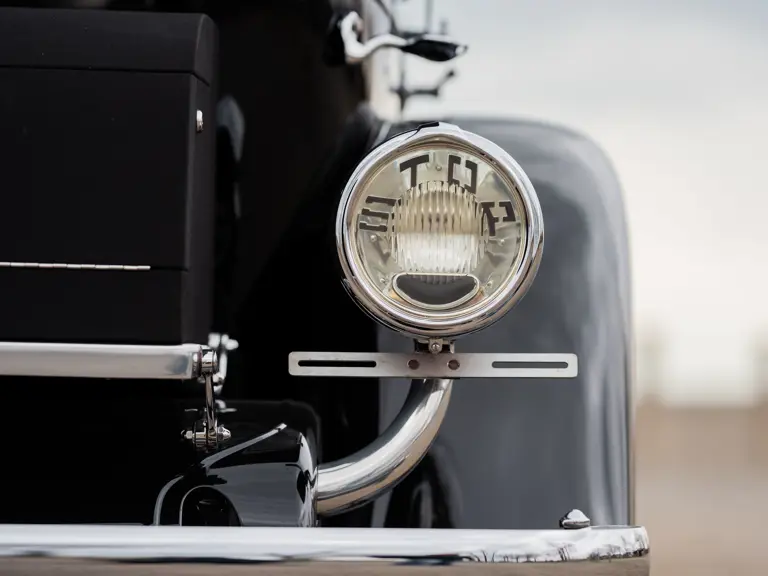
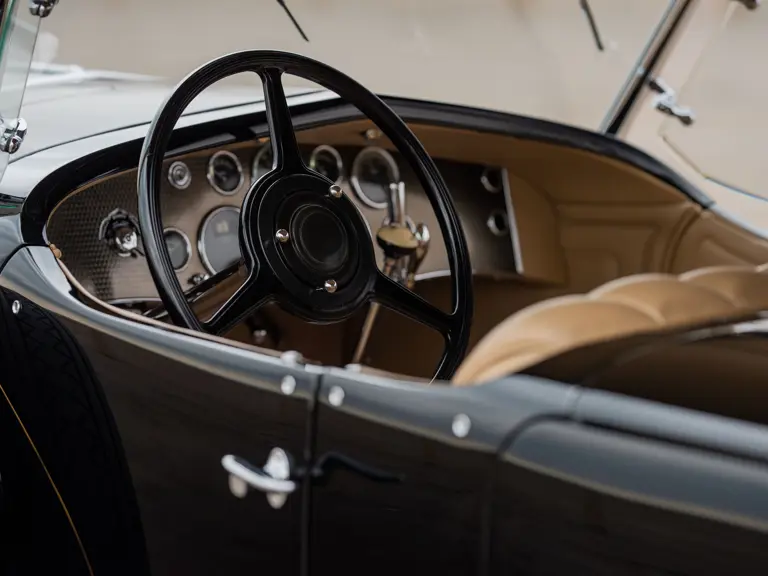
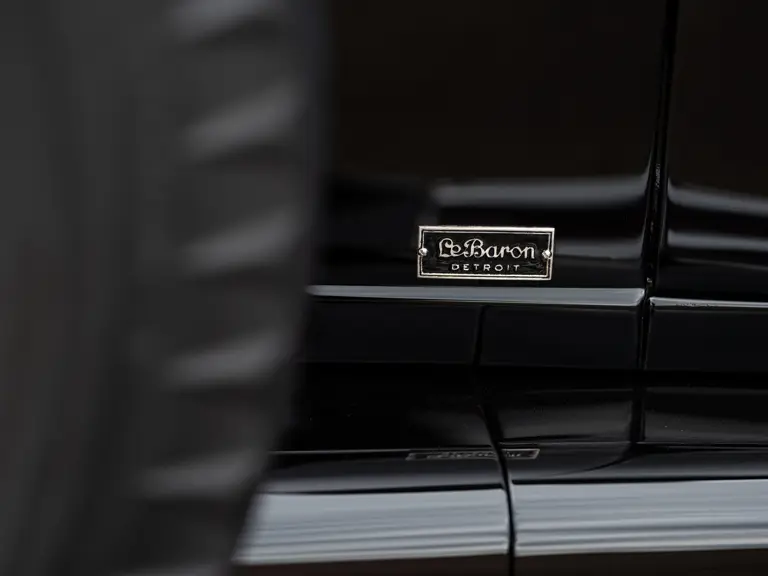

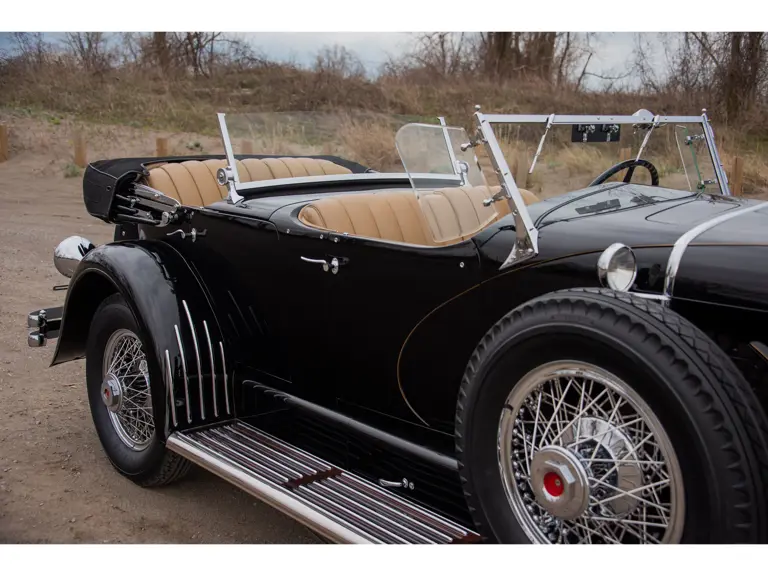
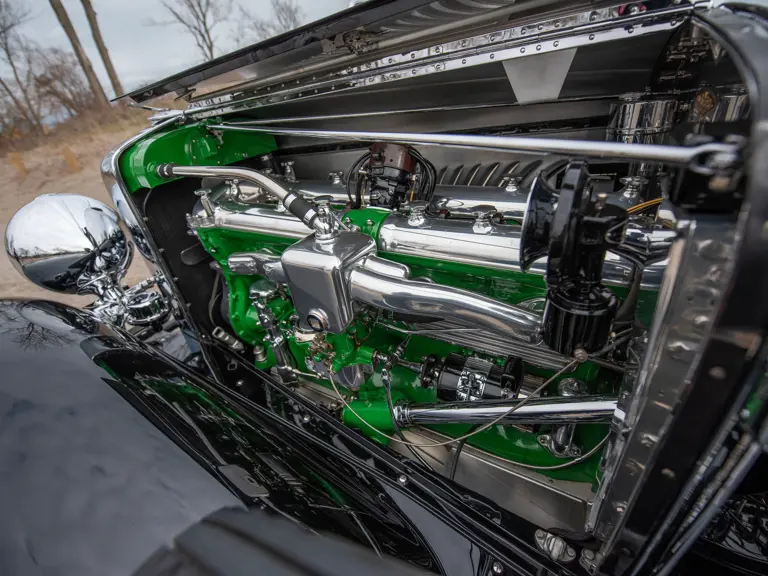
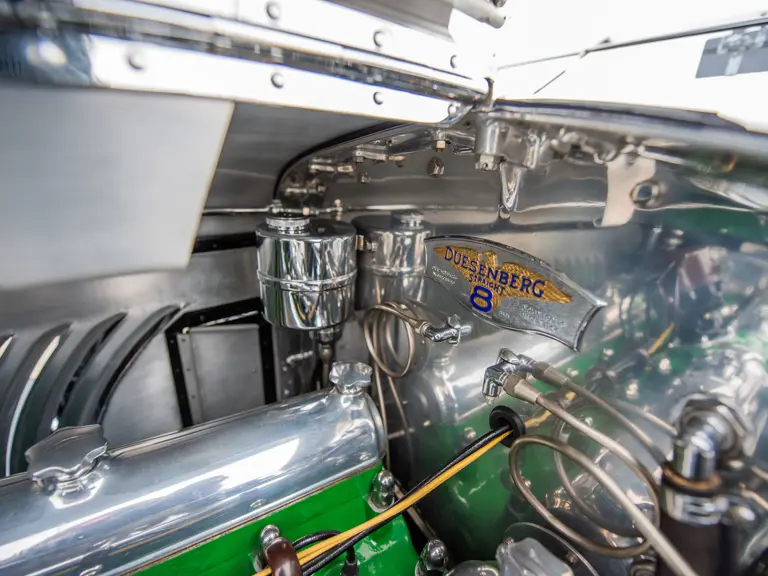
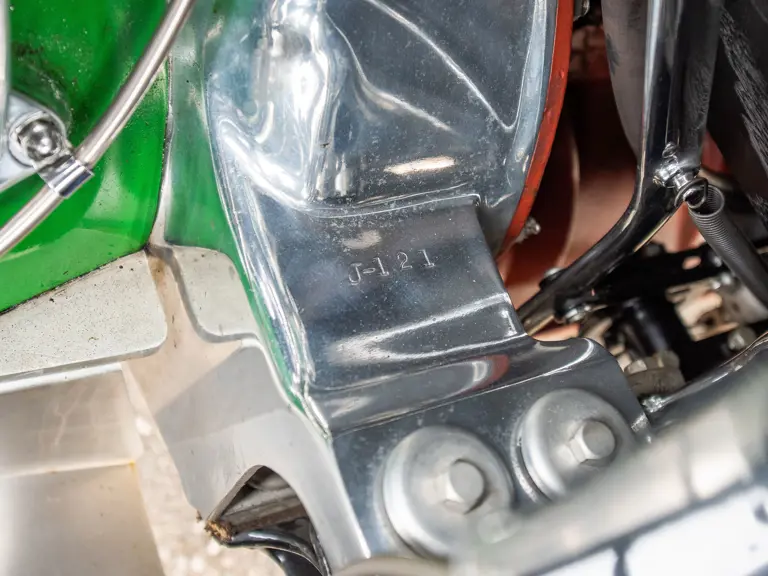

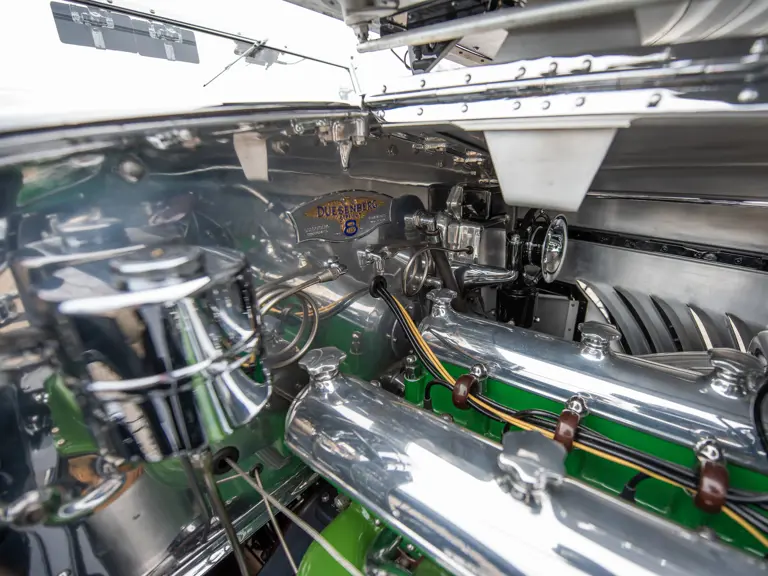
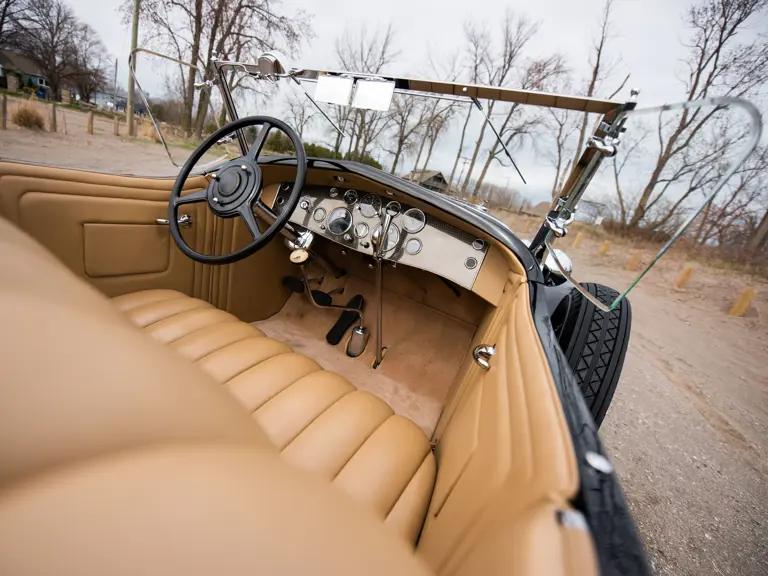
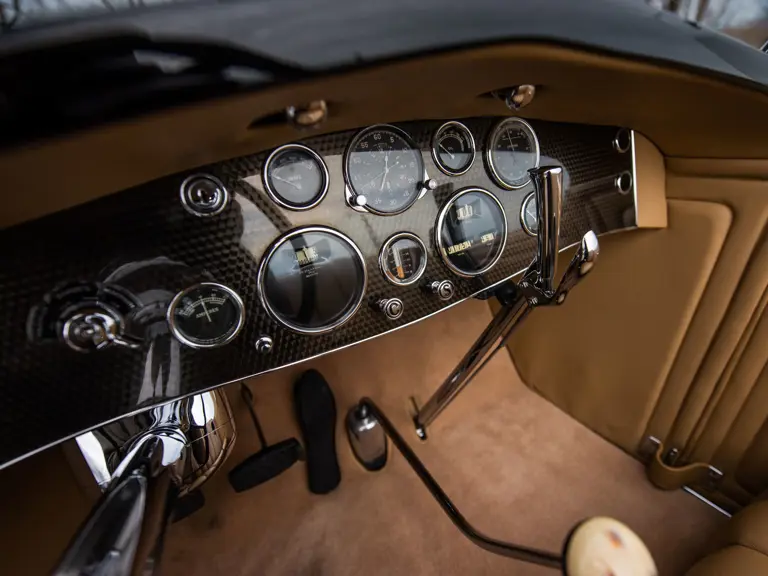


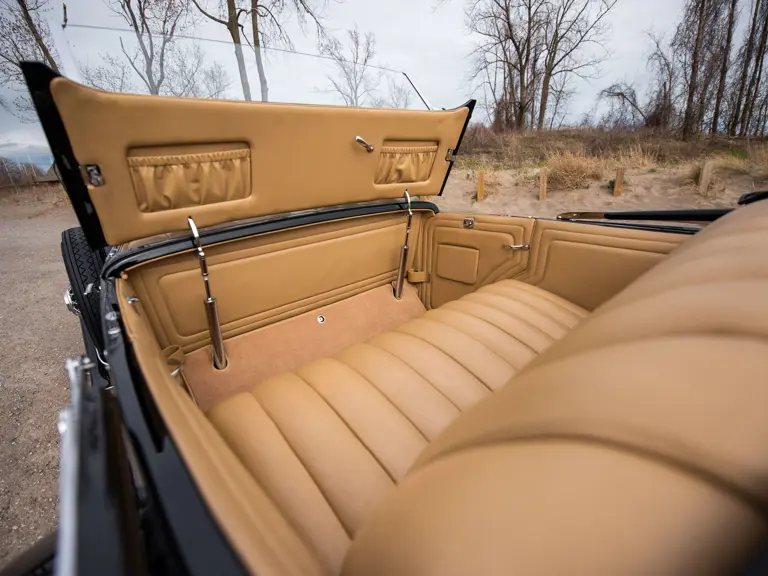

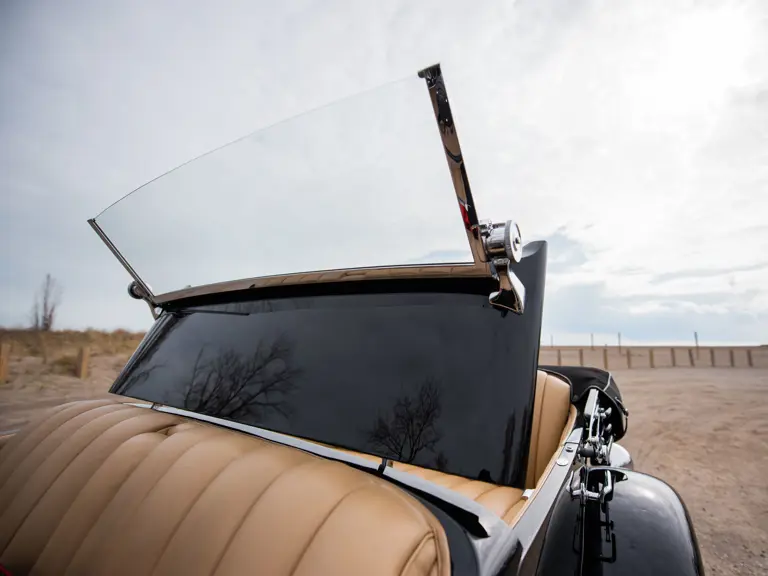
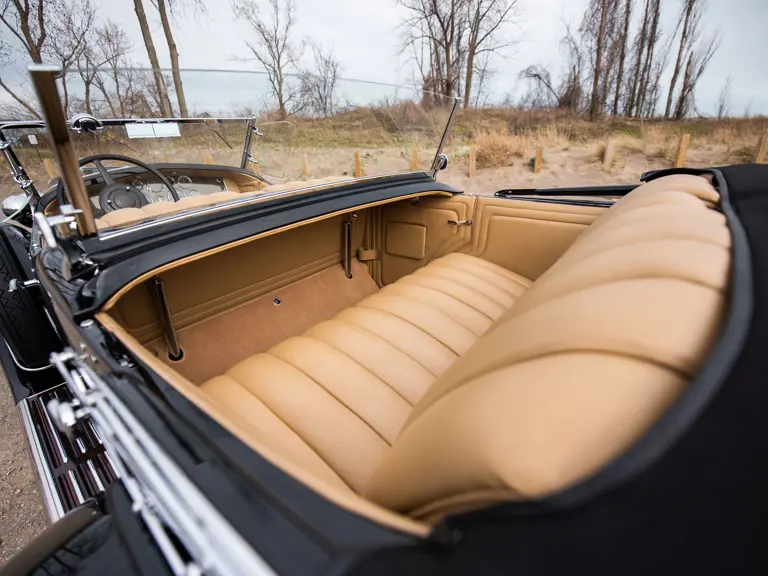
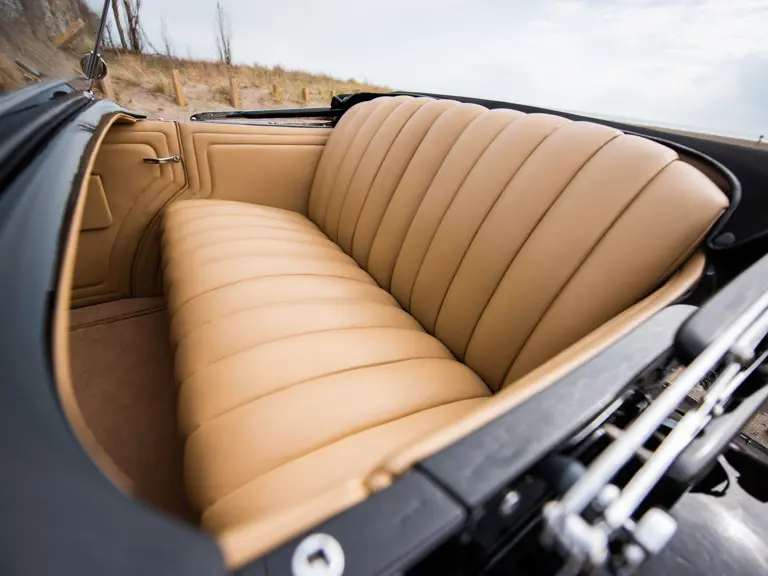


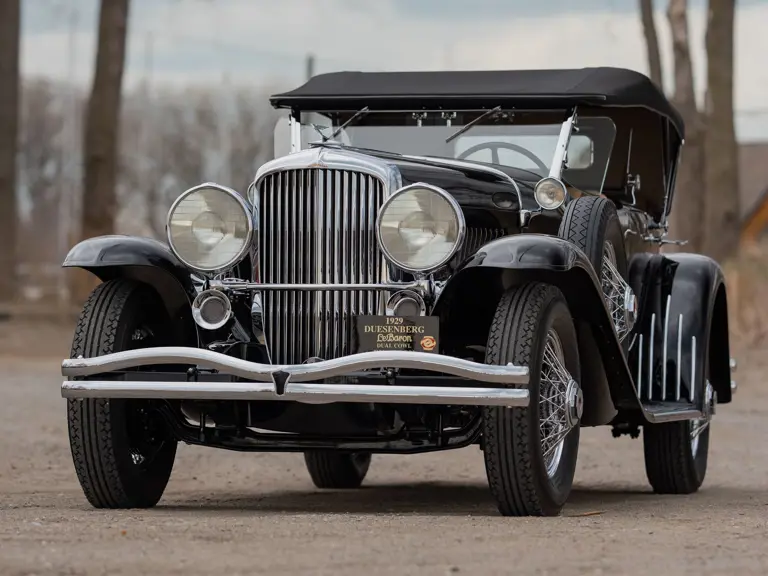
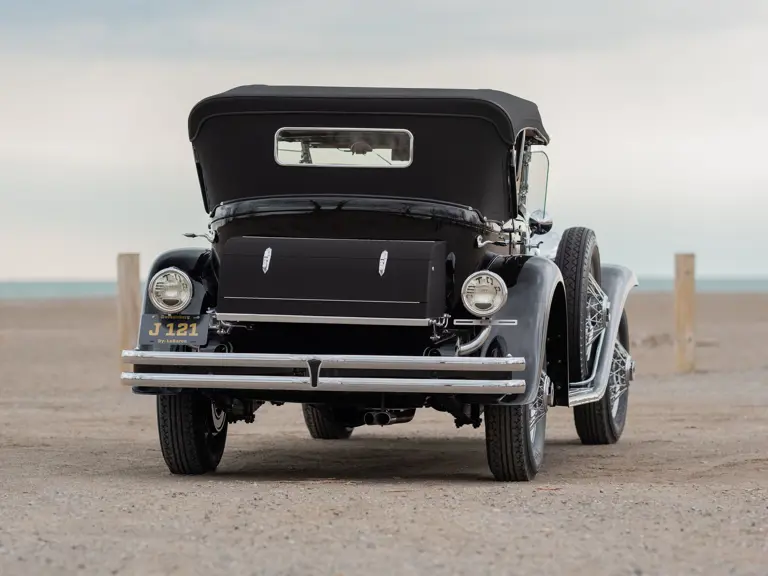
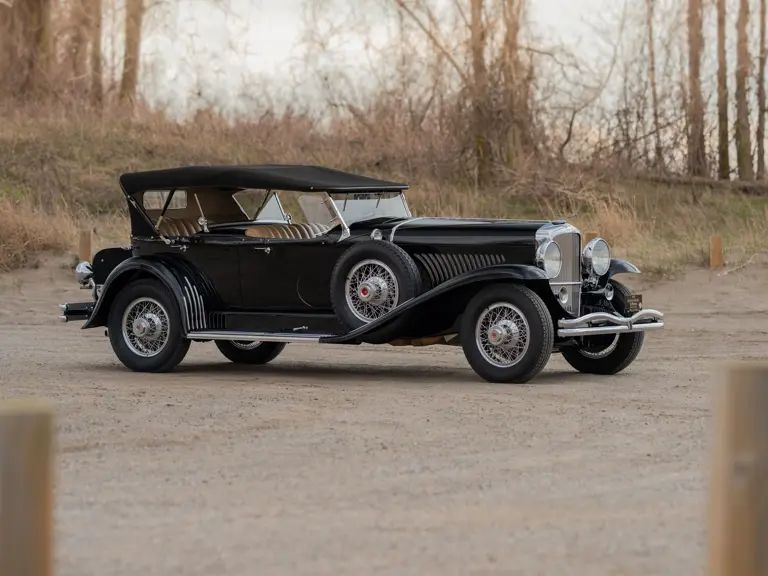
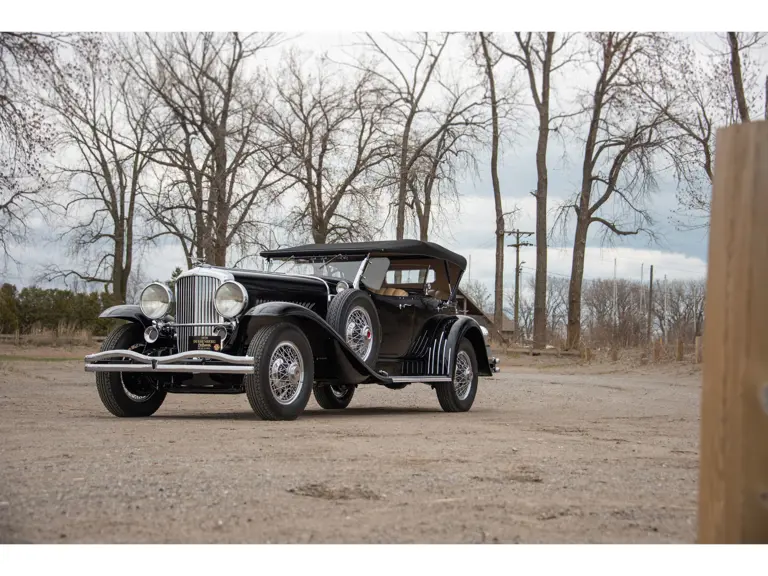
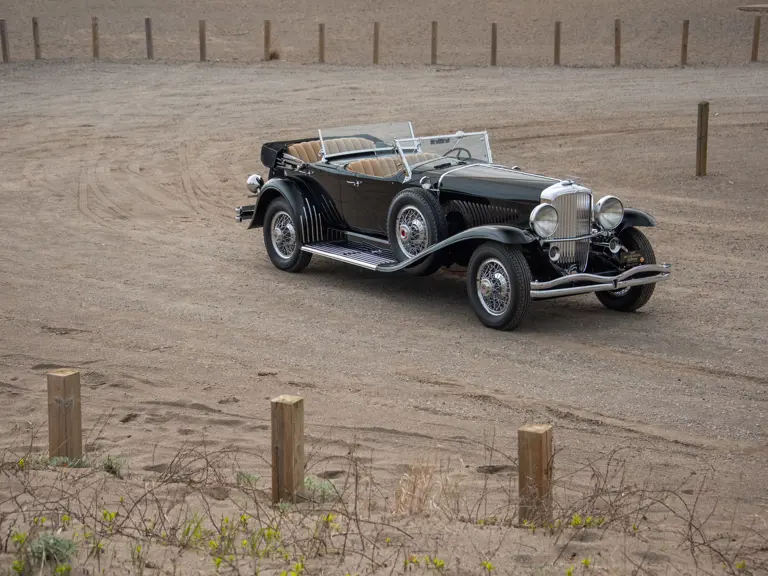
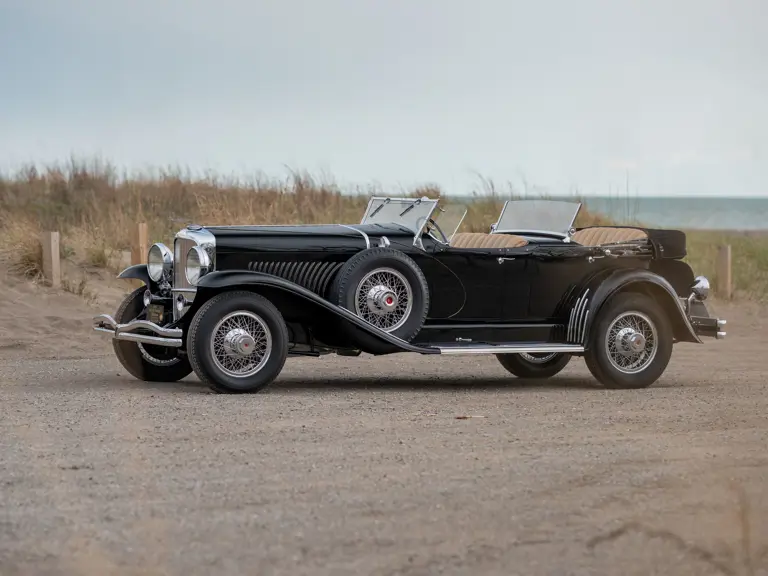
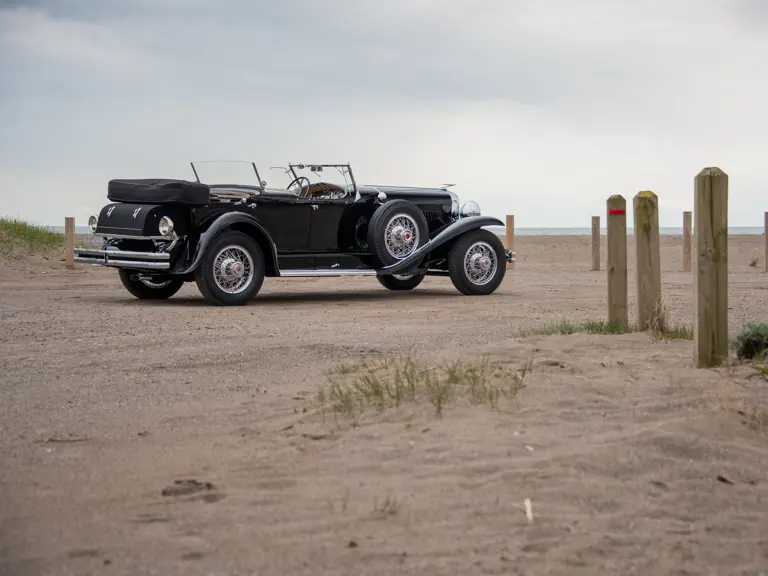

 | Coral Gables, Florida
| Coral Gables, Florida
